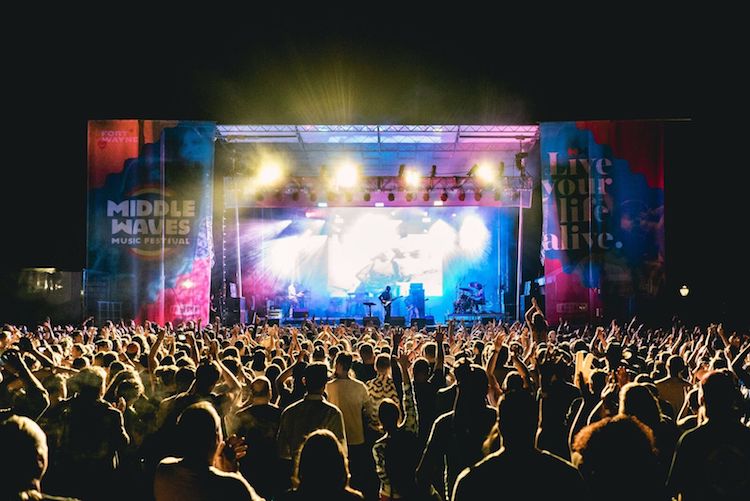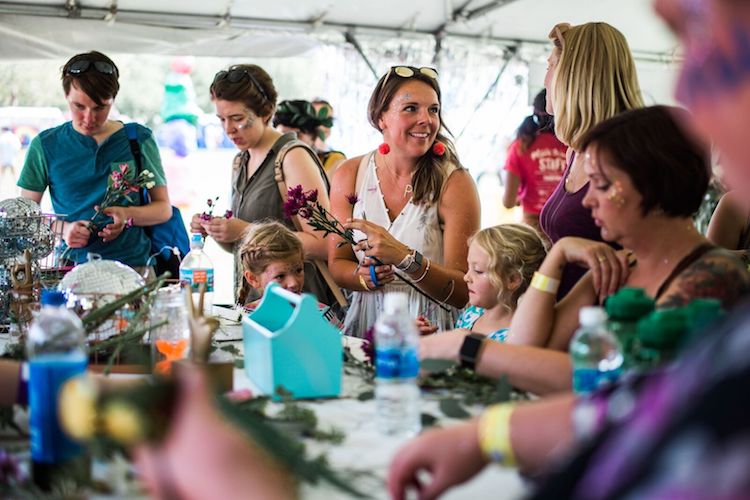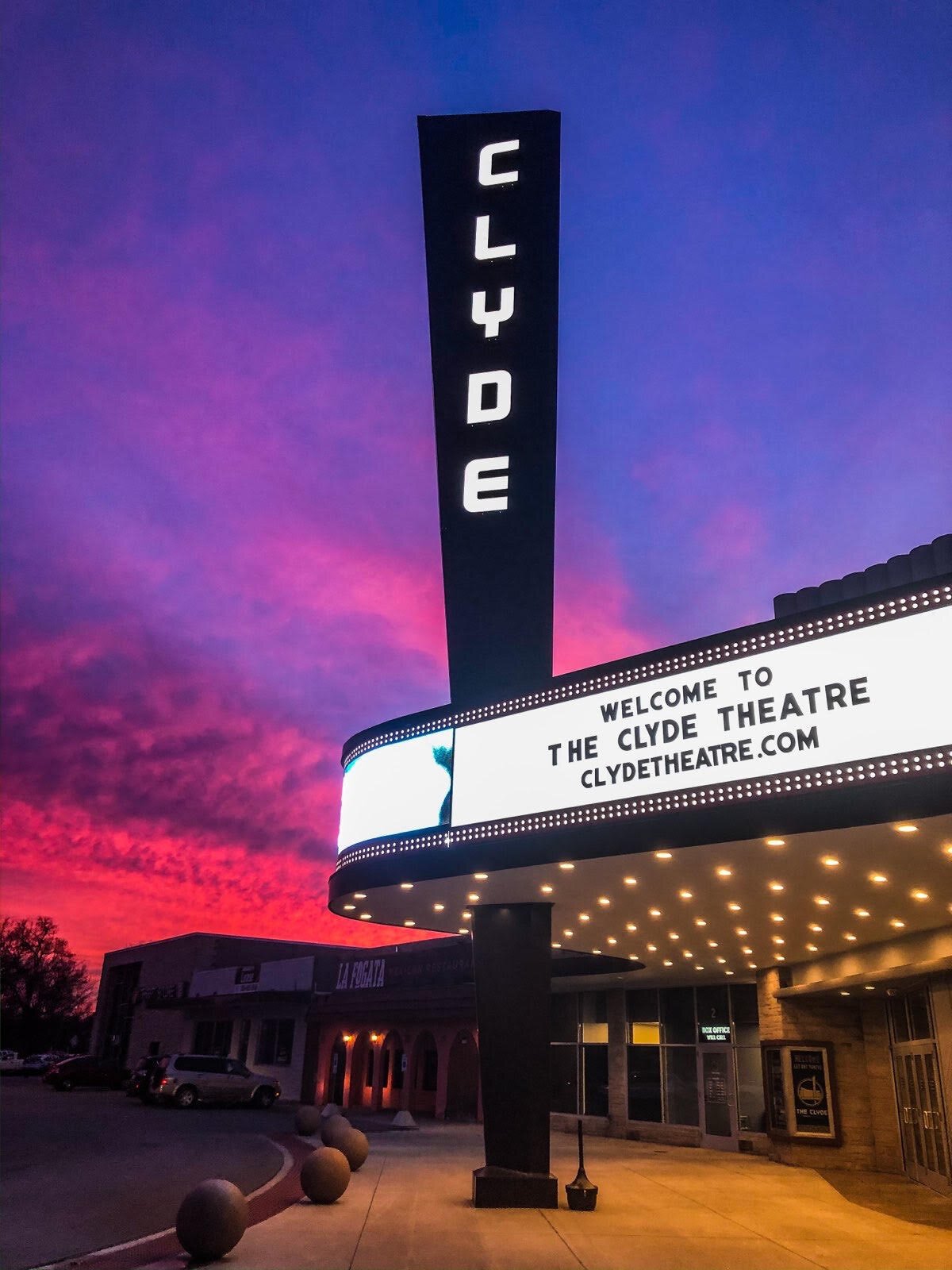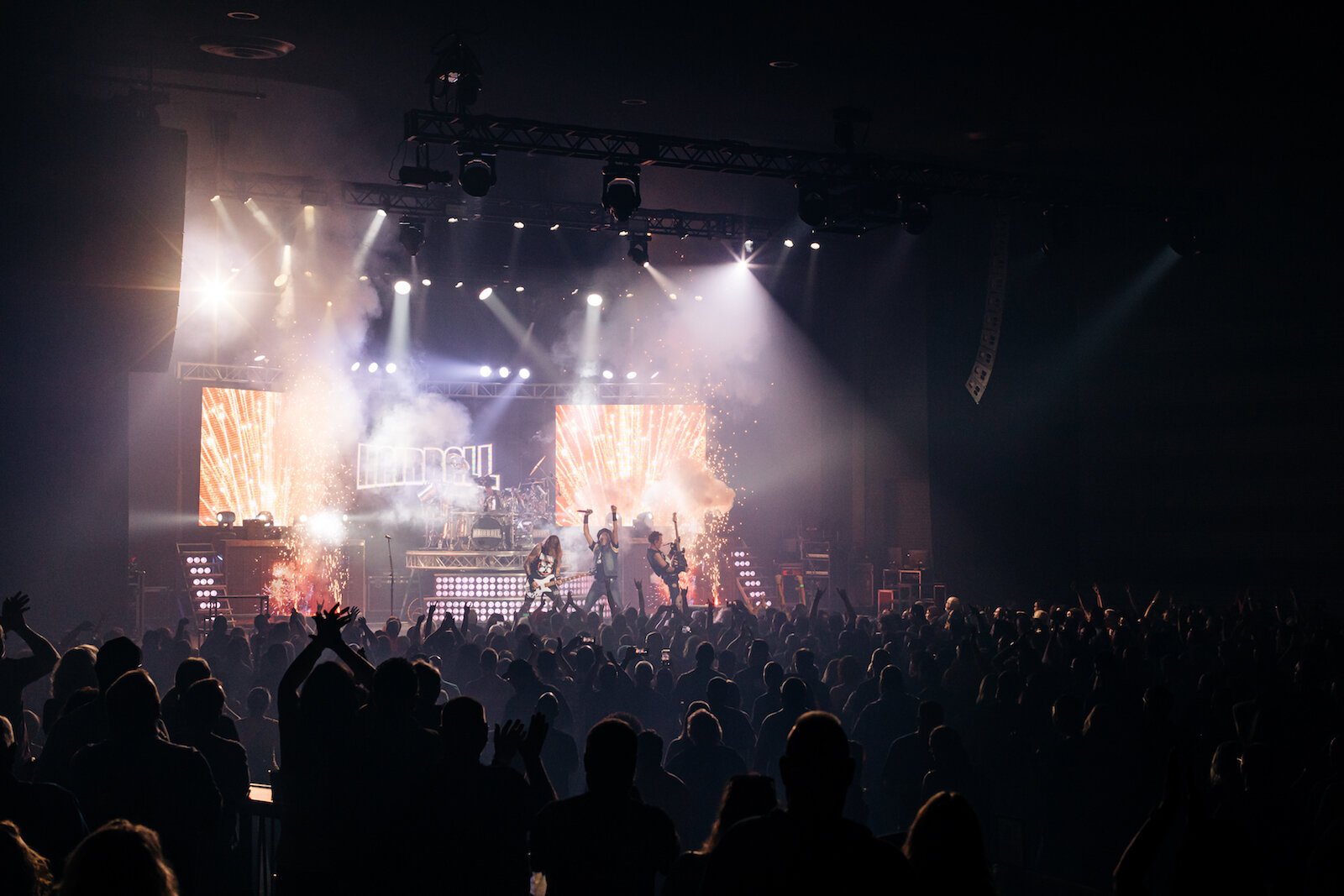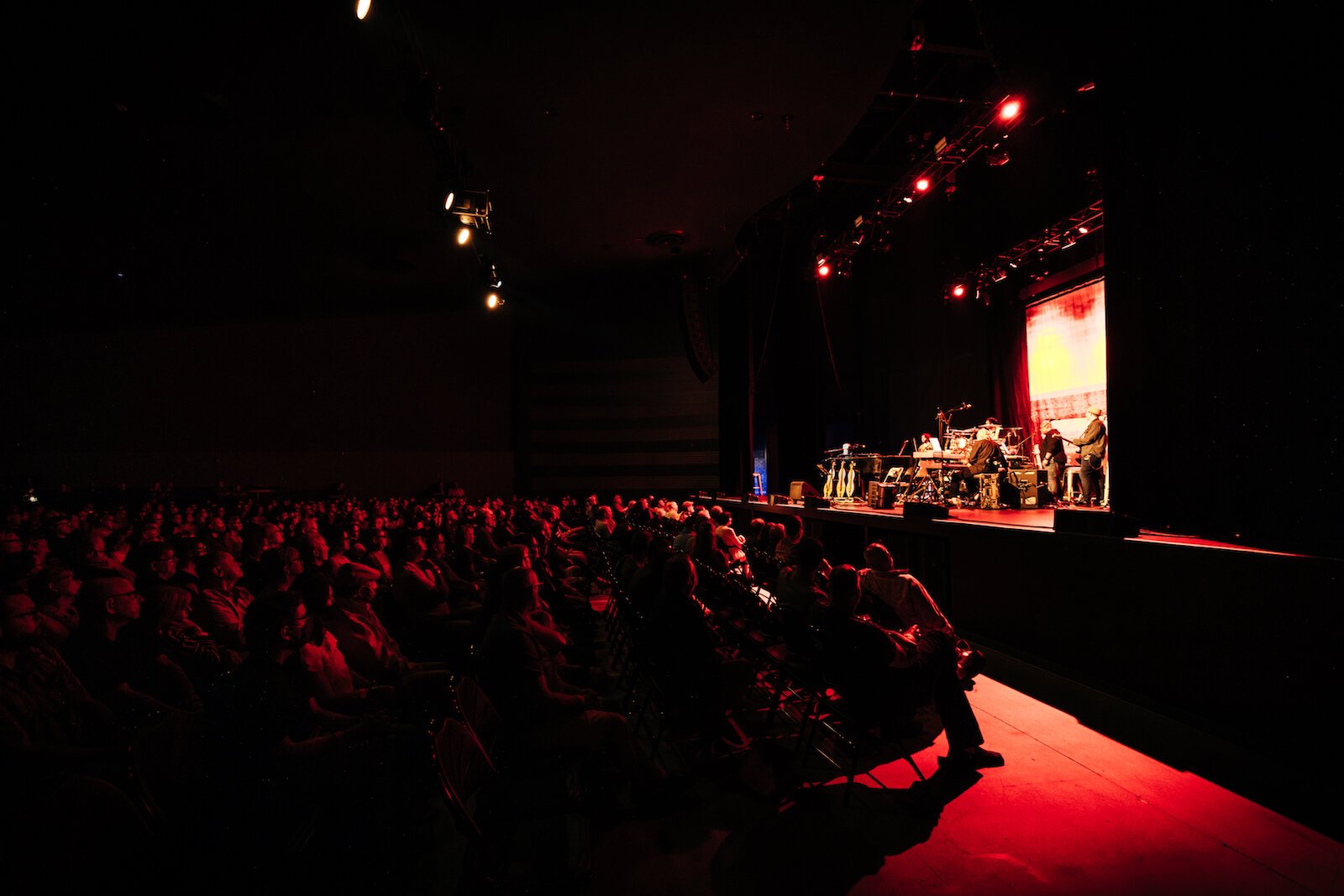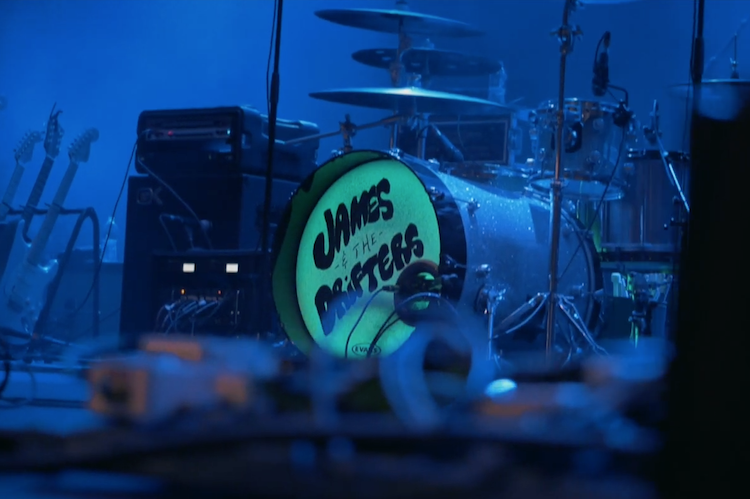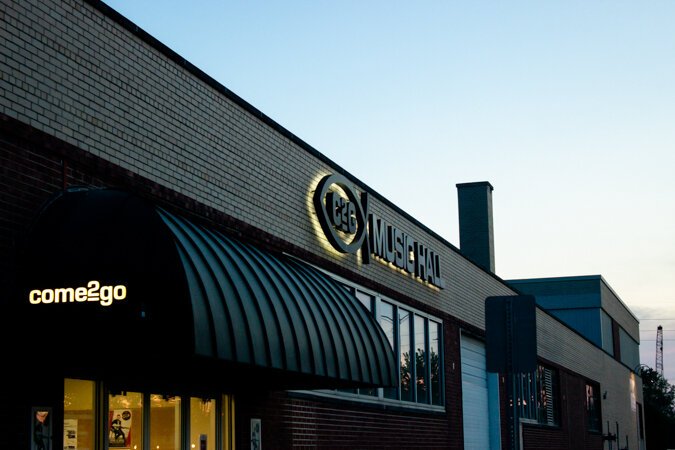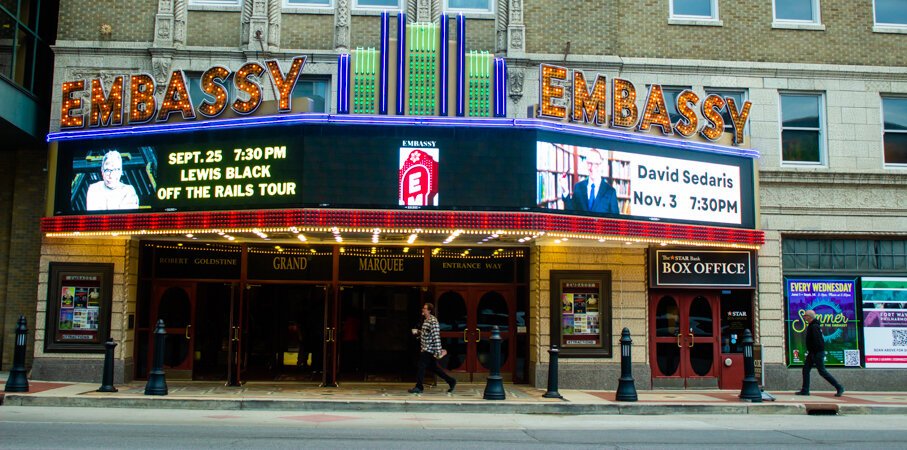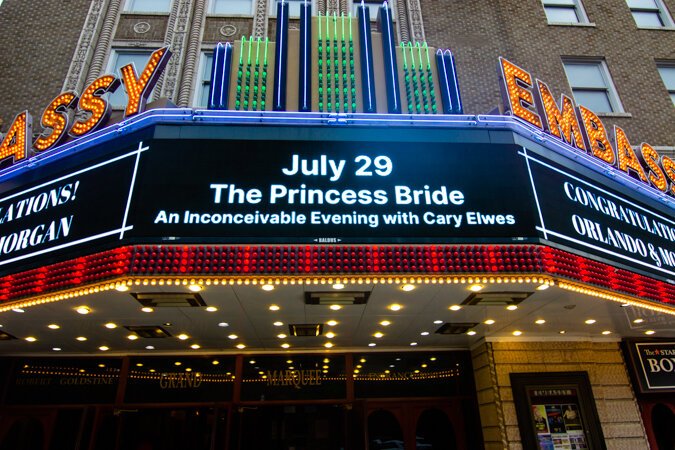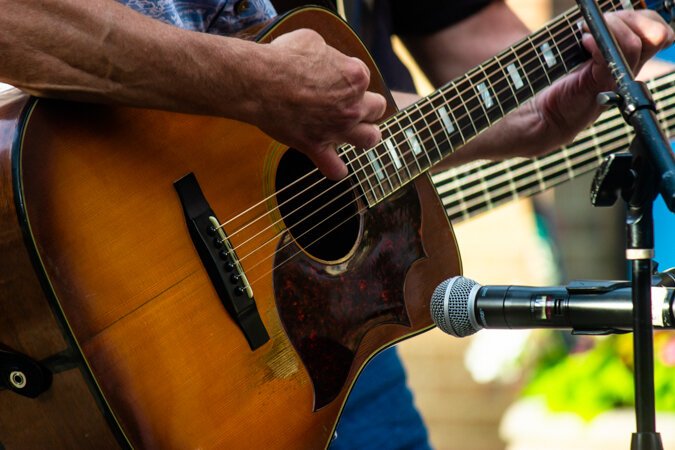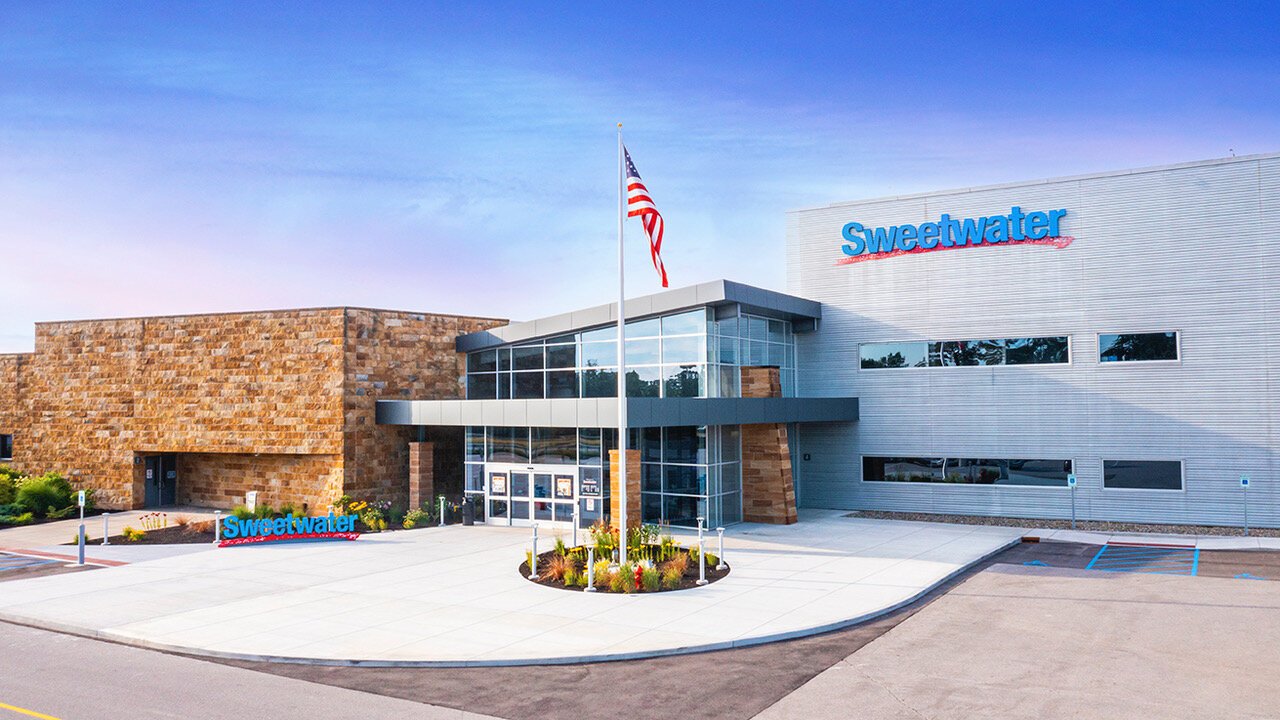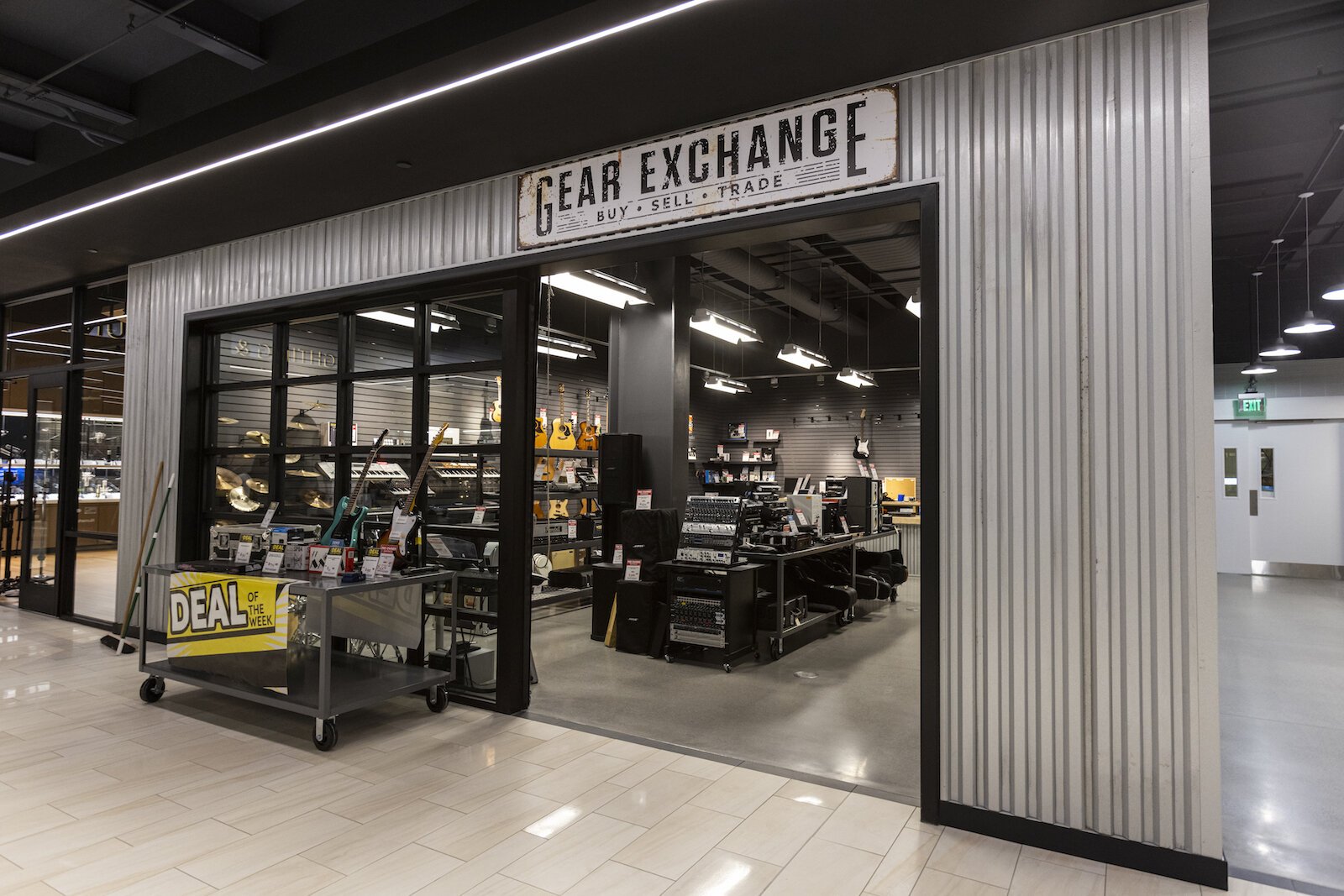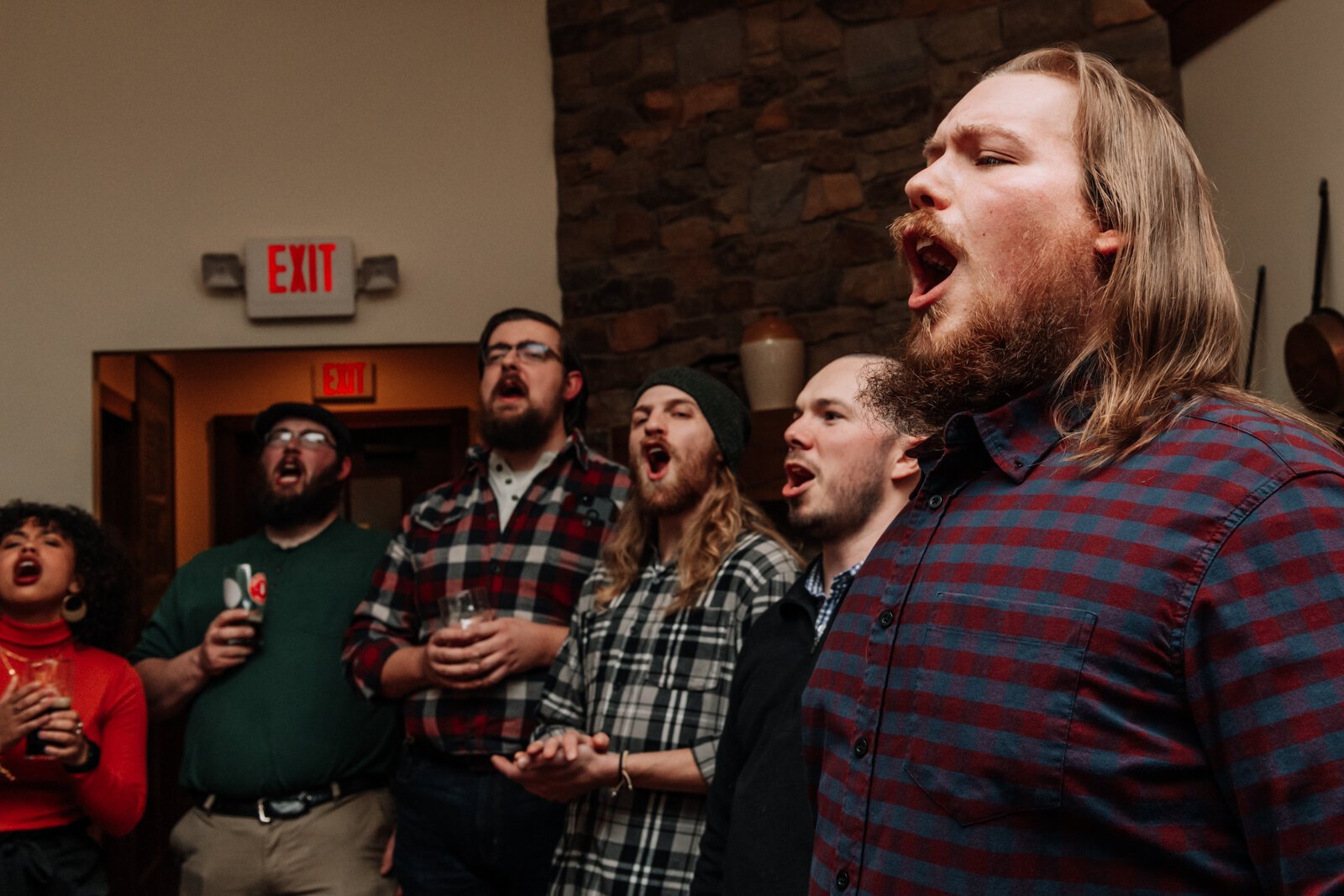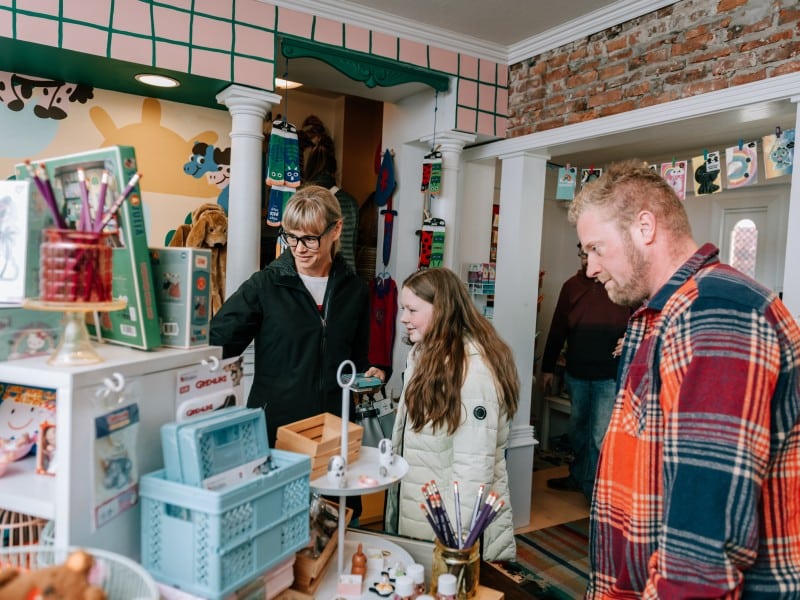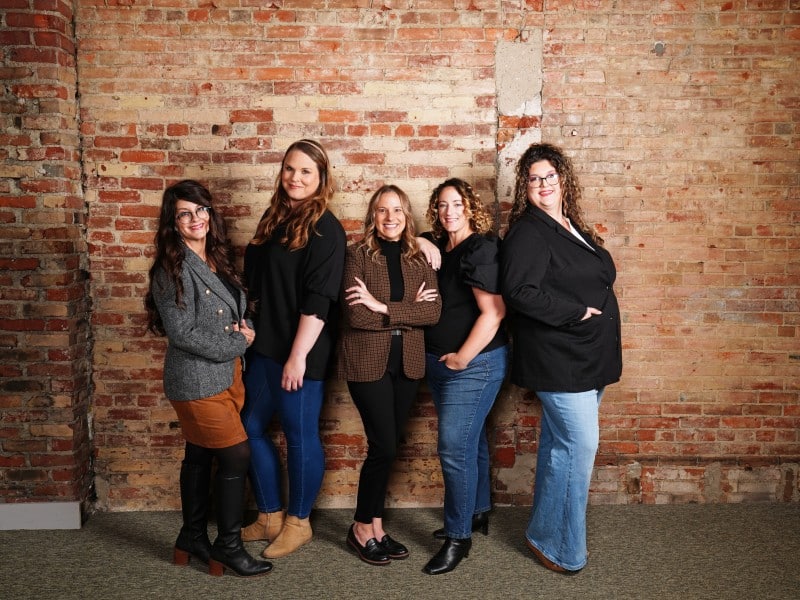Partner Partner Content Middle Waves is back! Now what does it take to make Fort Wayne a ‘Music City?’
People in the local music scene share ideas, from building on assets, to supporting mid-sized venues, and increasing wages for artists.
After a two-year hiatus during the COVID-19 pandemic, Fort Wayne’s popular Middle Waves Music Festival is back June 17-18.
Since it began in 2016, it has amassed a following as the region’s largest two-day destination festival event, featuring about a dozen local and eight national acts this year. In previous years, event organizers have reported as many as 2,500 paid tickets.
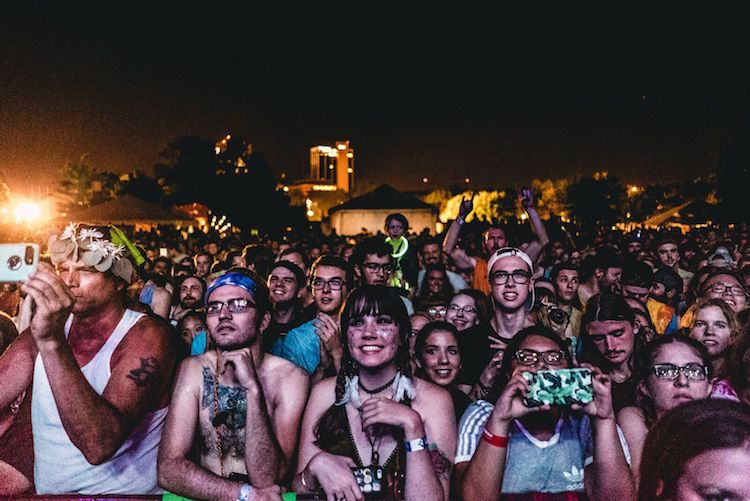
This year’s festival will be held at a new location, Foellinger Theatre, and it comes at a serendipitous time in local history as Fort Wayne seeks to redefine its future in relation to its growing music scene.
In 2021, Greater Fort Wayne Inc. and its partner organizations released their countywide Allen County Together (ACT) economic development plan, outlining a 10-year strategic focus, built on a framework of three pillars: High-growth, innovative, and inclusive. Under the umbrella of “innovative,” the ACT plans calls for making Fort Wayne and Allen County a Top 10 “Music City” in the U.S. through expanded music festivals, venues, training and education opportunities, and music industry innovation and technology development.
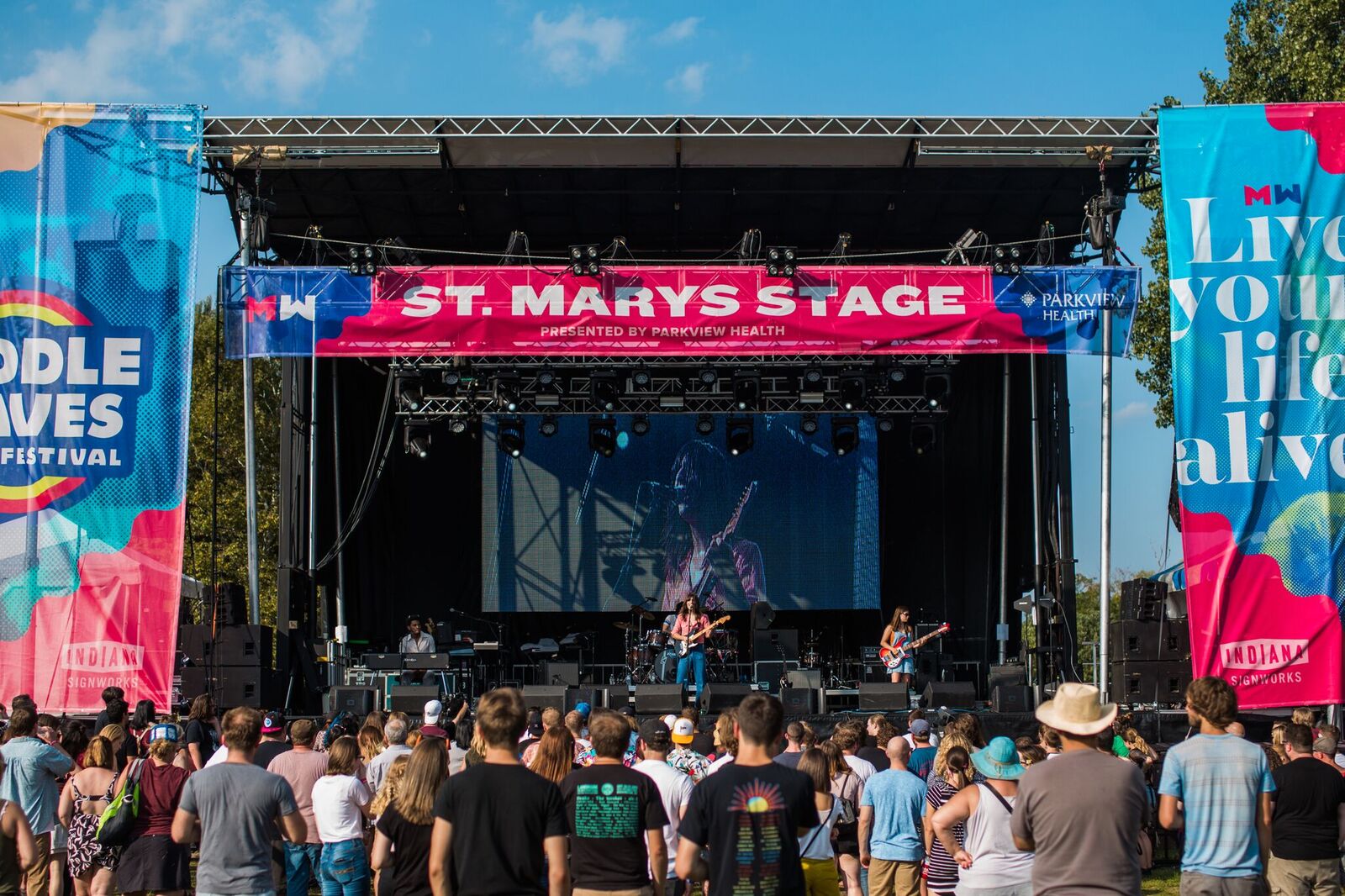
Ellen Cutter, Chief Economic Development officer at Greater Fort Wayne Inc. (GFW), says when her team conducted interviews and focus groups to inform the ACT plan, interest in Fort Wayne’s music culture was a prominent theme. Along with the city’s music education programs at local schools and universities, its location between larger cities, like Detroit, Indianapolis, Chicago, and Cincinnati, makes it a strategic place to foster a robust music scene.
So what are some of the ways Fort Wayne can take its music scene to the next level? Here are a few ideas.
Building on local assets to attract talent and create spaces for artists and fans
Fort Wayne is home to Sweetwater, the world’s leading music technology and instrument retailer. This distinction already puts Fort Wayne on the map for musicians and music fans in many ways.
Along with its state-of-the-art recording equipment and studios on-site at its campus, Sweetwater brings thousands of music lovers to Fort Wayne every year for its annual summer camps, festivals, and concerts. It’s attracting musicians and music lovers to live and work in Fort Wayne full-time, too.
“Just in the 11 years I’ve lived here, the company has grown from a couple hundred employees to well over 2,000,” Cutter says. “Most of the people who work at Sweetwater are musicians, too. So just from the standpoint of having a number of professional musicians in our community means that many know Fort Wayne because of Sweetwater.”
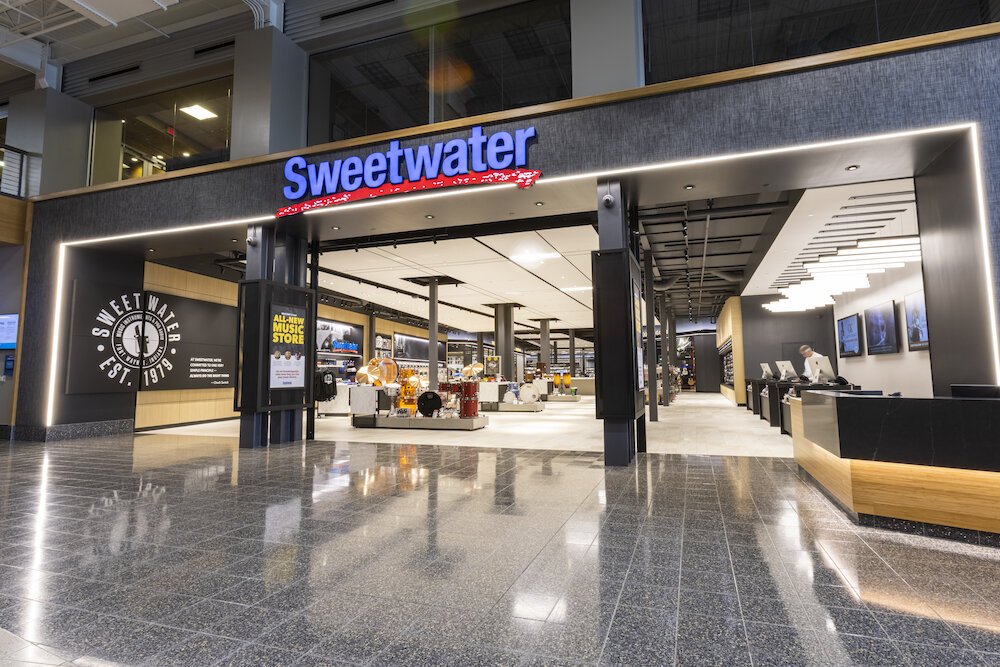
But Sweetwater isn’t the only place in Fort Wayne where up-and-coming musicians and music fans might want to work. Creative small businesses also provide jobs and help attract and retain music talent in Fort Wayne in their own ways.
As its name might suggest, One Lucky Guitar, Inc. has played a key role in fostering the growth of the city’s music scene to date. Although it is an advertising agency by trade, its Principal and Founder Matt Kelley is a longtime stalwart supporter, patron, and musician in Fort Wayne himself. As a member of the local band, the Legendary Trainhoppers, Kelley plays guitar, mandolin, and writes songs. Taking advantage of Fort Wayne’s location between bigger cities, he also occasionally travels to see musicians out of town.

Perhaps as a result, he and his team at OLG have been on the ground floor of several game-changing advances in Fort Wayne’s music scene. Along with launching and continuing to sponsor Middle Waves, Kelley and his team have created a thoughtful music venue called the B-Side inside their agency’s office in a historic brick building Downtown.
Kelley says the B-Side was originally intended to fill what he perceived as “a gaping hole” in Fort Wayne’s community when OLG opened in 2000—“a spot to see artists in a super-stripped down environment, where you can hear a pin drop.”
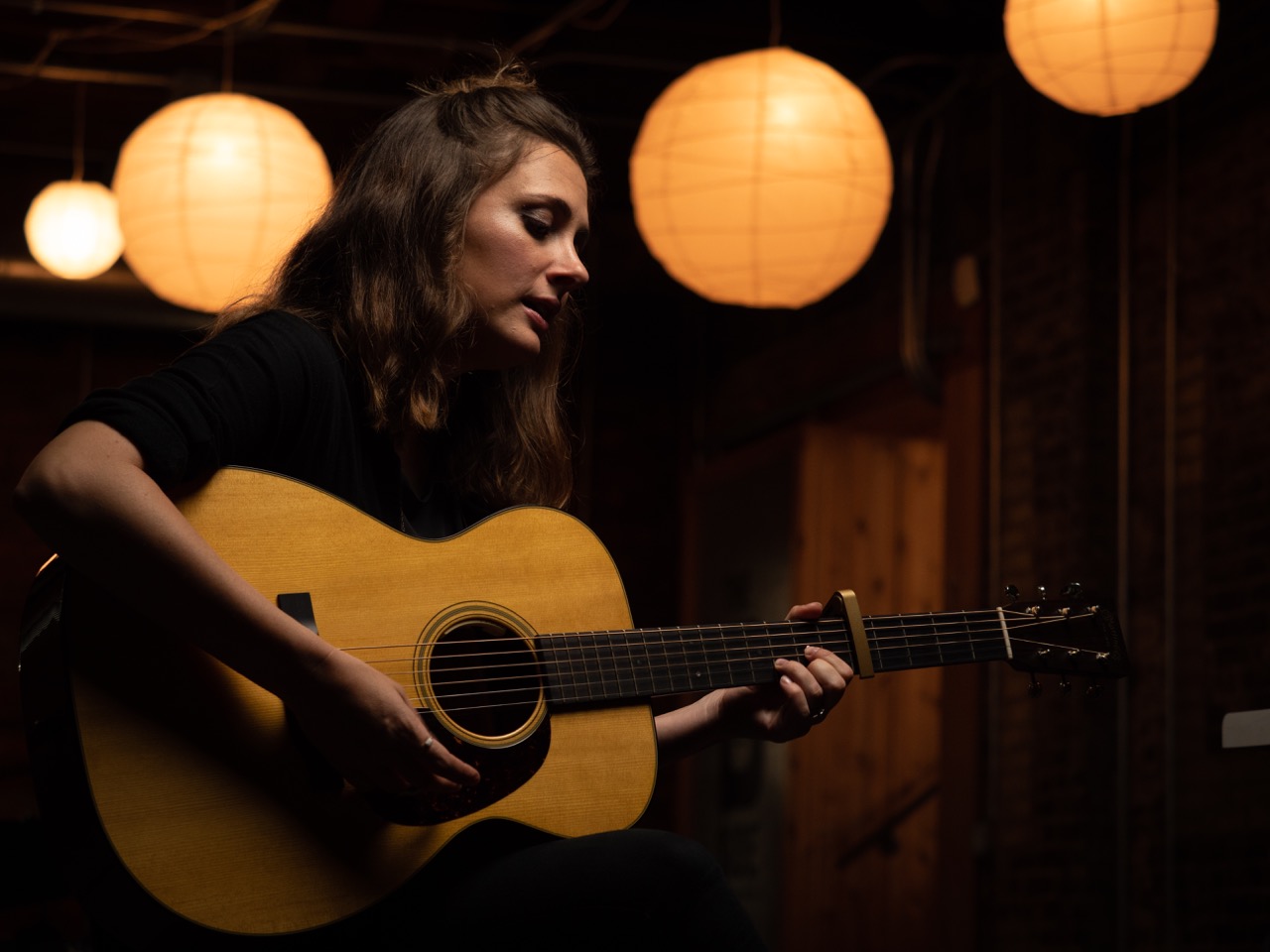
While Fort Wayne has long had restaurants and bars that host live music, oftentimes, these spaces aren’t primarily designed for music and listeners. And when big acts come to town, they often play at large venues, like the Allen County War Memorial Coliseum.
The B-Side is an intimate space for about 50 people or fewer to hear songs and personally interact with artists, particularly indie artists who might not typically perform in smaller Midwestern cities.
“We’re an absolute niche—more ‘living room show’ than ‘music venue,’” Kelley says. “We’re not a bar, and there are no TVs showing the NBA playoffs in the background. We singularly focus on the artist–patron relationship and minimizing the distance between the two, whether physically or spiritually. It’s a gift for both parties.”
While Kelley says OLG is at a crossroads in determining the B-Side’s future, its past has already shaped the local music scene, offering something off-the-beaten-path in Fort Wayne. It’s a similar spirit he has experienced in venues, like the Brass Rail and Club Soda, which have long showcased local talent and attracted national acts to perform for Fort Wayne audiences, enriching local music culture.
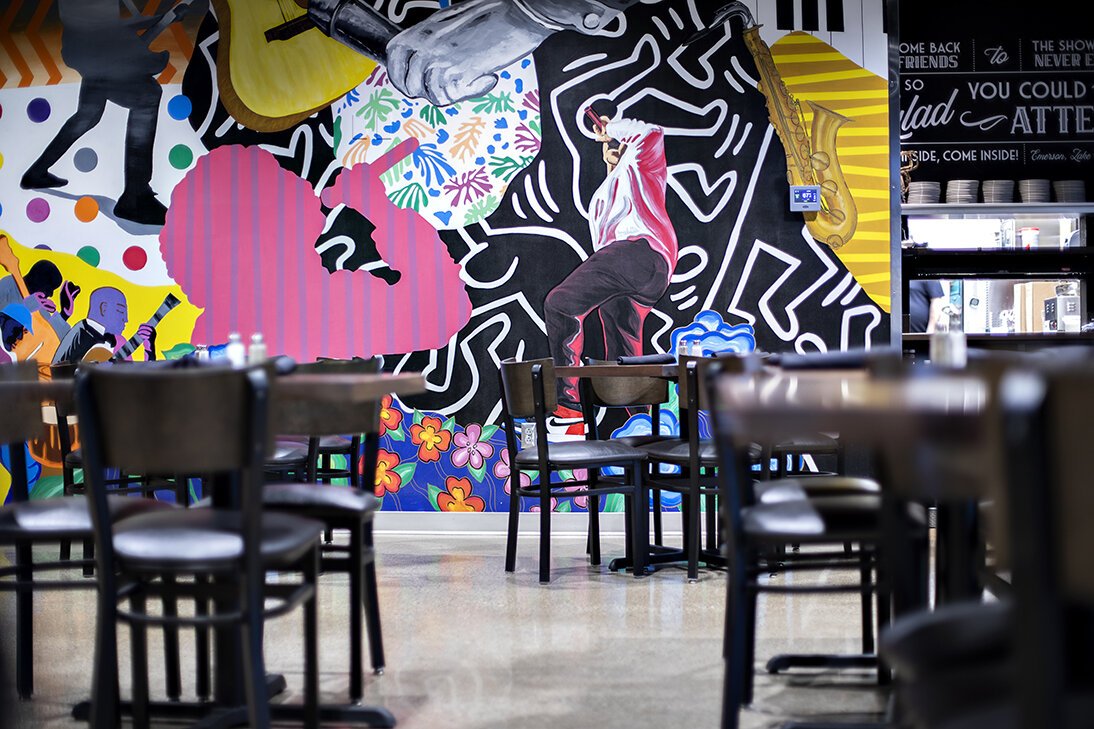
Overall, Kelley believes music has the power to unite people, and he believes it is worth the investment to grow Fort Wayne’s music scene. Having experienced the national market, he knows that earning the moniker of a Top 10 “Music City” is a lofty goal, but he believes a more modest version of that goal might be attainable.
“I’m not sure that Fort Wayne can become a ‘Top 10 Music City,’ but I strongly believe we can be a ‘Music City,’” he says. “I think that music can, should, and will play an irreplaceable role in our community’s quality of life value proposition, and that it is worth the investment of time, money, and heart to make it so.”
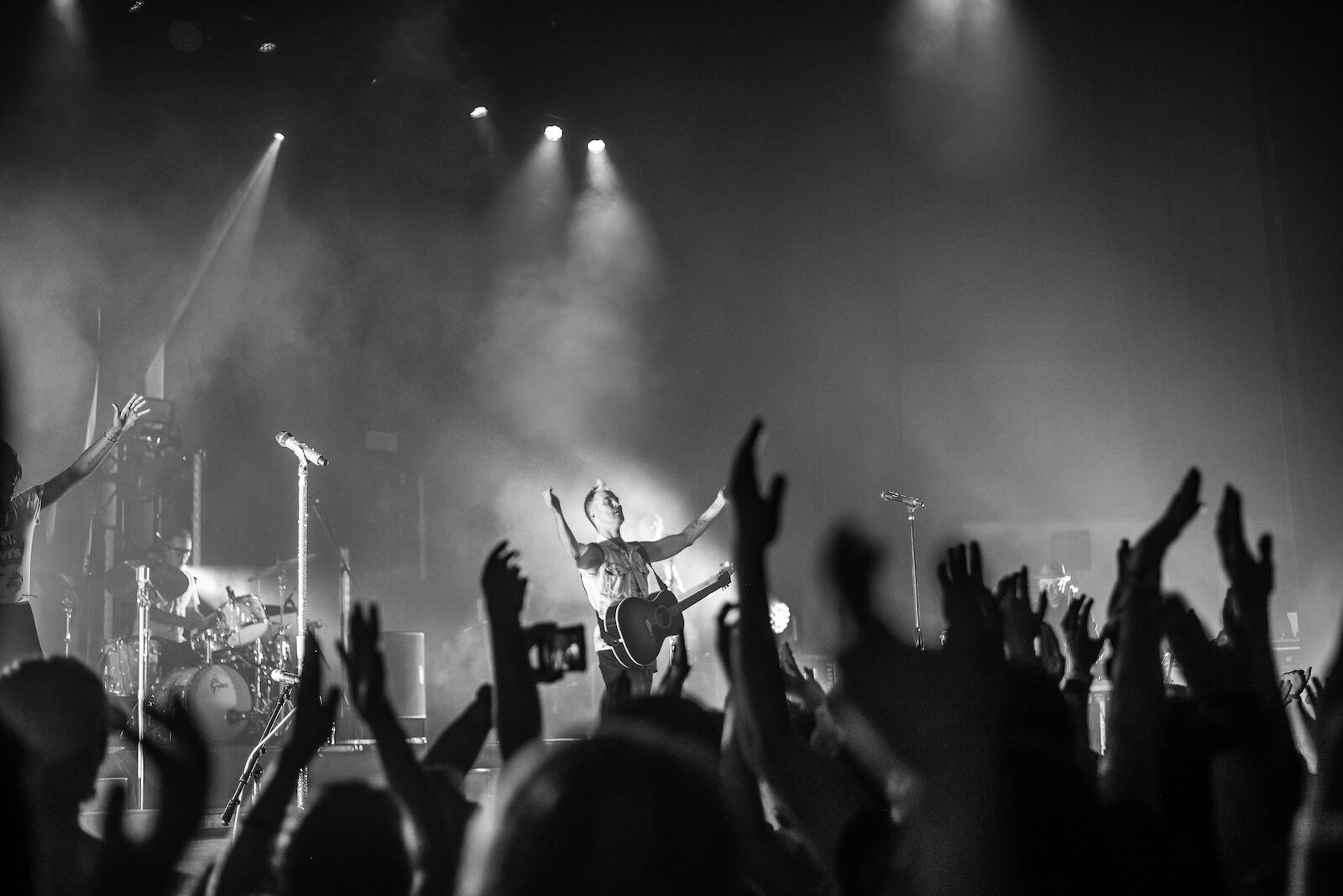
In thinking about the B-Side’s legacy and what could take Fort Wayne’s music scene to the next level, he sees room to expand the city’s venue options, which could bring a wider range of musical acts and patrons into the mix.
“I feel we need more venues for smaller, up-and-coming touring acts, along with local acts who make original music,” Kelley says. “I love the most recent developments in our Downtown community, including Promenade Park, The Landing, and The Bradley. But other than festivals or one-off pop-up events, there’s no live music—no additional Downtown venues. And from what I can see, so far, the same is true with the upcoming developments coming online now.”
Increasing opportunities for local artists to perform
As a well-known, 2,471-seat performing arts theater built in 1928 as a movie palace, the Embassy Theatre in Downtown Fort Wayne is pivoting to expand the area’s venue options. Today, it’s home to the Fort Wayne Philharmonic Orchestra, as well as several traveling and local acts that grace its stage.
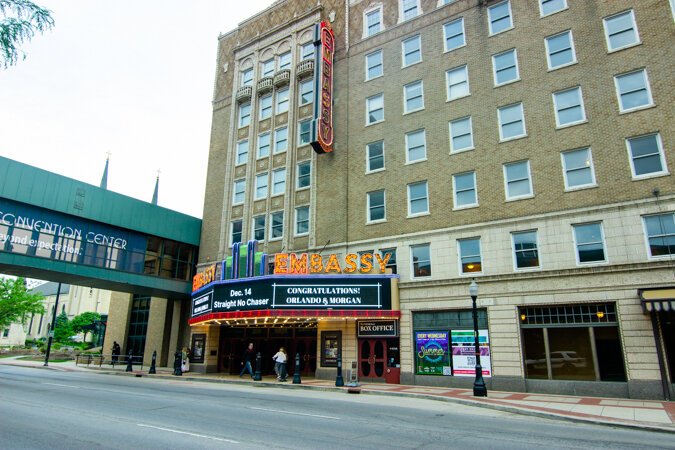
Jarin Hart, a longtime champion of Fort Wayne arts and culture, serves as Chief Programming Officer at the Embassy. She says, in recent years, the theatre has made a pivot that has changed the flavor of the venue—and could help elevate the local music scene.
“Historically, the Embassy has been a rental house,” she says. “But now we’re in this really interesting transition period, where we’re making the shift to becoming a presenting house. The easiest way to differentiate a rental house from a presenting house is that a rental house is exactly that—anybody can come and rent the space to put on a show or a concert or a play or whatever. However, being a presenting house allows us more creative freedom to better tailor arts and culture experiences for our community, which is all incredibly exciting.”

For instance, being a presenting house means the Embassy can showcase more of the local and regional talent, giving people a platform to perform who might not otherwise have it.
Kelley and his team at OLG have contributed to paving the way for this shift, too. OLG helped the Embassy launch its Down the Line fundraiser events about 16 years ago, which invites local performers to the stage for a one-night music tribute to music legends. Hart sees the continued growth of opportunities for locals to perform at the Embassy and other venues as a sign of positive momentum toward becoming a “Music City.” She believes the ACT plan is a good start in developing a comprehensive music strategy and outlining a vision of Fort Wayne as a music- and musician-friendly city and metro area.
She says it’s also important to keep in mind that the term “Music City” is aspirational. In her estimation, Fort Wayne already has a thriving music scene, as qualified by the fact that people are quick to support local, national, and even international music acts here.
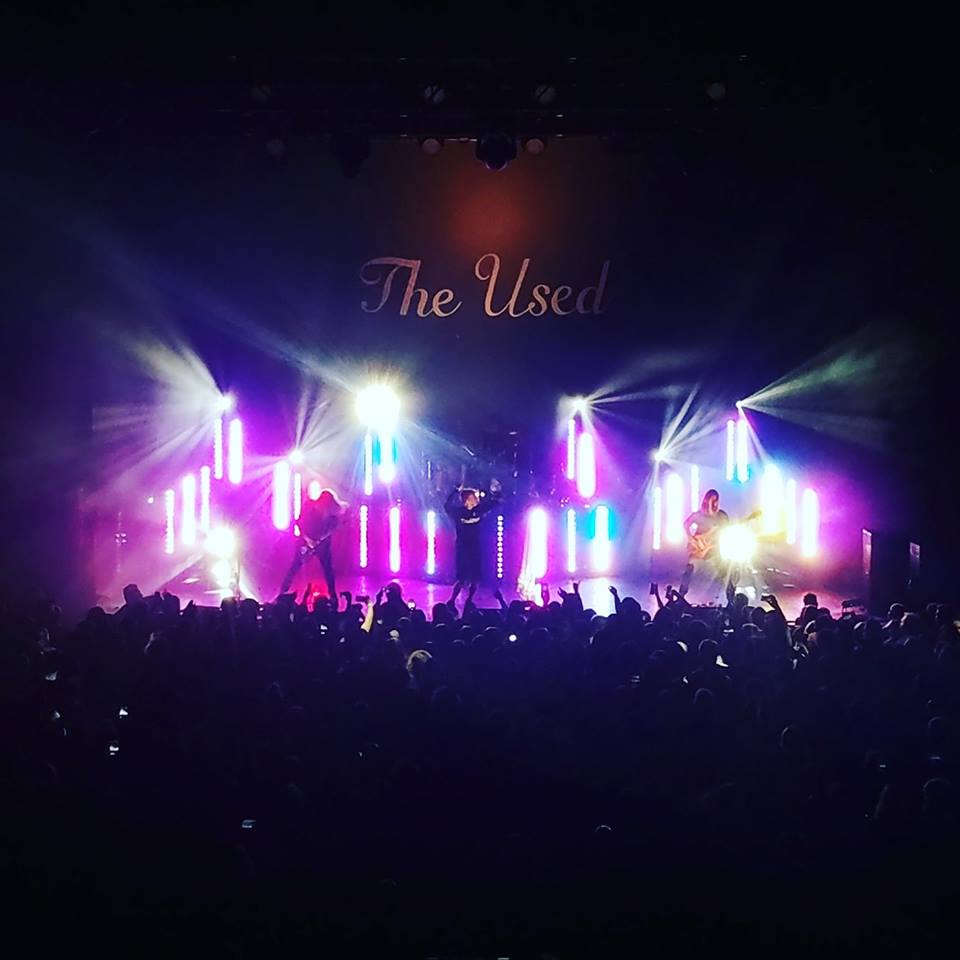
As Kelley alludes to, she also sees the need for more mid-sized music venues in Fort Wayne. While the Embassy and Allen County War Memorial Coliseum offer large venues for artists and places like the B-Side or the Brass Rail offer niche experiences, there’s room for more venues in that “Goldilocks” range in between.
One such example that has emerged in recent years is the Clyde Theatre. After undergoing a $9 million renovation in 2017 and 2018, courtesy of Sweetwater founder Chuck and Lisa Surack, the Clyde has become a state-of-the-art performance hall and event center. Its 21,000-square-foot main performance hall can hold about 2,000 guests, and it offers upscale accommodations for national touring artists.
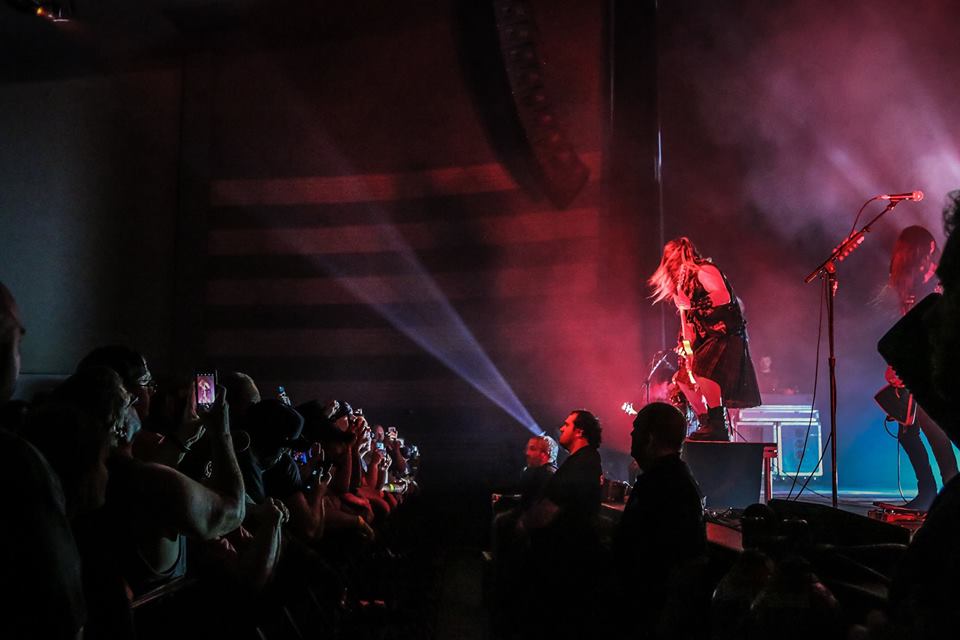
Perhaps as a result of meeting Fort Wayne’s need for a mid-sized venue, the Clyde’s Executive Director Gregg Coyle says his team has found their stride and been attracting large audiences, even despite the pandemic’s challenges.
“Back in February, we had a night where we had more than 2,000 fans in the room,” he says. “The fans came from 40 different states, which is kind of typical for some of the national touring shows that we do. It’s really great to see that.”
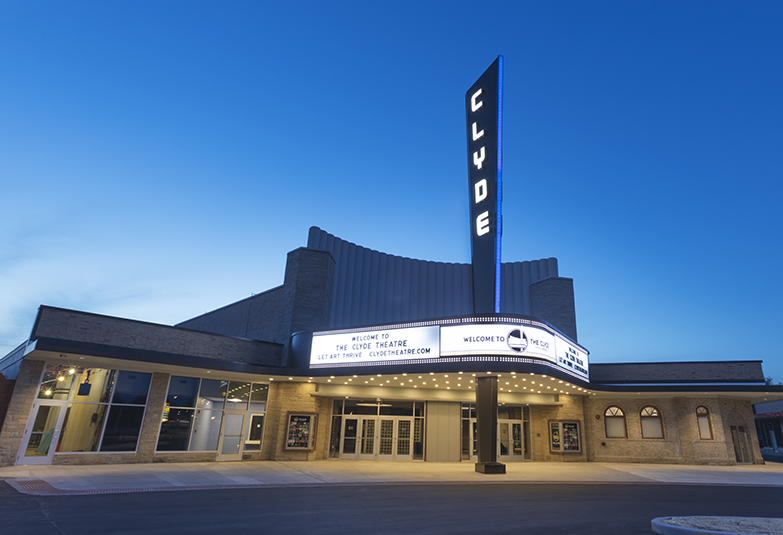
Coyle attributes the Clyde’s success so far to the acts they’ve brought in, which span genres from country to rap, rock, and classical. He also credits Fort Wayne’s convenient location, just a car ride away from bigger cities like Chicago, Indianapolis, and even Nashville.
Coyle believes having more mid-sized venues in Fort Wayne would be a positive development for the Clyde, too, creating the type of cluster effect up-and-coming cities need to thrive.
“I don’t look at (other local venues) as competition,” he says. “I look at Netflix and people staying home and not going out for that live experience after the last years (as competition). For me, people going out and really enjoying the experience, no matter the location, is a really positive and good thing for all of us.”
Investing in Fort Wayne’s high arts scene to help musicians earn livable wages
Stephen Stachofsky, 27, is a musician by education who grew up in a self-proclaimed “musical household” in Fort Wayne. His father, Mark Stachofsky is a lecturer in Purdue Fort Wayne’s School of Music, and he has studied voice performance and music education at PFW. He’s also spent a year singing with an opera in Toledo, Ohio.
“When I moved back to Fort Wayne after that, as a musician by trade, I learned that full-time ‘musiciaining’ is not an easy thing to do in Fort Wayne,” Stachofsky says.

Instead, he started working as a server at local restaurants—first, the now-closed Caliente on Wayne Street Downtown, and later the Irish pub, J.K. O’Donnells, across the street. In recent years, inspired by fellow musical friends he’s met around town, Stachofsky has helped launch a group called the Ragtag Bunch, which casually performs Irish folk music and sea shanties at Fort Wayne area pubs. They’ve even released a locally produced album on Spotify.
While the group’s performances are often free and not intended to be anyone’s full-time or even part-time gig, Stachofsky says more opportunities for musicians to earn higher wages for their work in Fort Wayne could help take the city’s music scene to the next level—where it could contend with larger “Music Cities.” Although gigging as a professional musician can be challenging in any market, he’s noticed a lack of understanding in the Fort Wayne market about what reasonable fees might be for artists and performances.
“I don’t think there’s a real community understanding yet of what musicians are worth,” Stachofsky says.

In his mind, this is symptomatic of a larger challenge that could be addressed by elevating and investing in Fort Wayne’s “high arts scene,” particularly its philharmonic. Stachofsky believes the health of the city’s symphonic orchestra is a bellwether of the overall health of Fort Wayne’s music scene because it means the community can provide gainful employment opportunities to professional musicians. Referencing the recent labor strike, he says “the Fort Wayne Philharmonic is a big deal. I think it’s a bigger deal than people realize it isn’t until something happens to it.”
An opera singer and a classical musician himself, Stachofsky says many cities trying to build their arts and music community have implemented opera programs as a distinctive piece of local music culture.
“Cities like Grand Rapids, Mich.; Columbus, Ohio; and Toledo, Ohio, have opera programs,” he says. “Even Indianapolis has a small, albeit struggling one. There’s something to be said about the culture of a city when you can say, ‘I’m going to the opera tonight.’”

Even so, Stachofsky and his friends who formed the Ragtag Bunch have found success gigging at local venues and are even collaborating with national singers in bigger cities.
It’s this scrappy, up-and-coming spirit of Fort Wayne that could work in musicians’ favor. If you want to see something happen here, there’s opportunity to start it, and the market is hitting a sweet spot where it’s engaged, but isn’t overly saturated yet, so new acts can make an impact.
To Stachofsky, that means more opportunities for musicians, like himself, to create a name for themselves here.
“I’m seeing it more now than when I was growing up and my parents were trying to be musicians in Fort Wayne and also have kids and a job and a house,” Stachofsky says. “There’s more opportunities now to make things happen yourself, and I think that’s going to keep getting better.”
Changing perceptions about what’s possible
Indiana and the Midwest are known for their modesty, and while it is a noble trait, it can also be a deterrent to making visionary initiatives a reality. From Parkview Field to Electric Works, bold ideas have frequently been met with criticism or disbelief.
Though optimistic about Fort Wayne’s potential to become a Top 10 Music City, Cutter acknowledges the city’s tendency to think “too small” at times. In her opinion, this inclination might be holding the city back from realizing its assets and achieving its potential in the creative realm.
“I think the biggest challenge is our belief that we can do it,” Cutter says. “I think it goes right back to the question of: Are we established enough to plant that flag?”

In the early days of the Middle Waves Music Festival, Kelley and his team heard variations of this question echoing in conversations. Is Fort Wayne big enough or “cool” enough to host a multi-day music festival that could attract top talent?
In some ways, it comes down to the willingness to take a risk. He and Hart both believe a more “adventurous” spirit among locals could help develop a stronger local music scene. For instance, they’d like to see more audiences willing to come out and support performers without knowing exactly what to expect beforehand.
After all, you never know who is going to grace Fort Wayne’s stages before they make it big, and the city has hosted artists locally who have gone on to become global sensations.
“A couple examples of that might be Lizzo performing an early-evening slot at Middle Waves—a few months before becoming the biggest-selling artist on the planet,” Kelley says. “Or The Avett Brothers playing on the street in front of The Dash-In just a couple years before performing on the Grammy stage alongside Bob Dylan.”
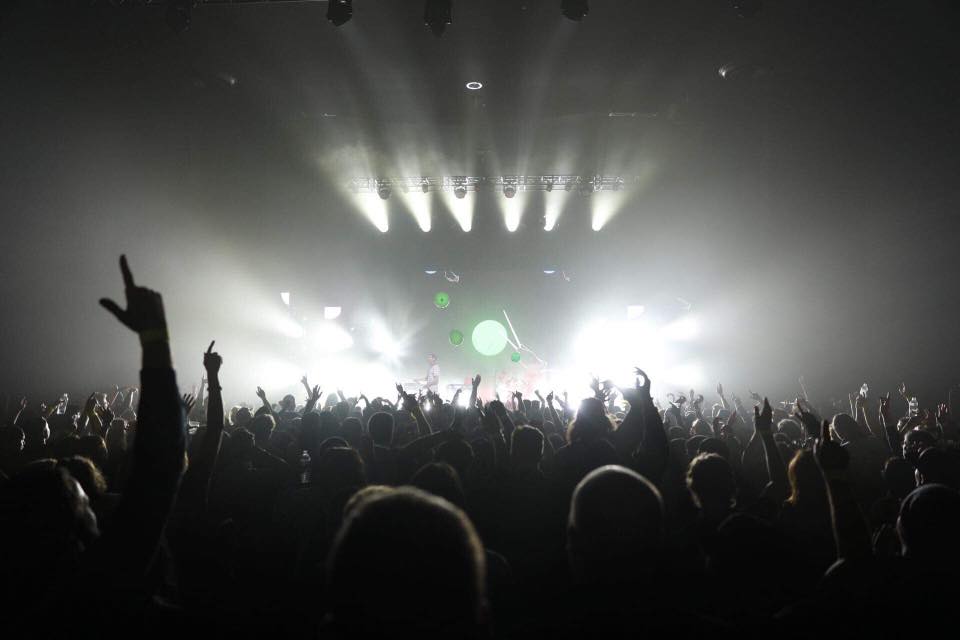
Supporting events, like Middle Waves, is one way citizens can keep encouraging the local music scene to blossom.
“I’d love to see more and more folks seek out a new experience, and take a chance,” Kelley says.
This article was made possible by underwriting support from Greater Fort Wayne Inc.

